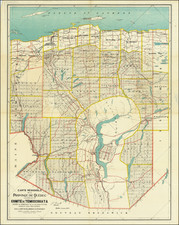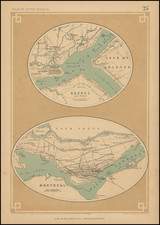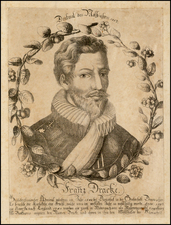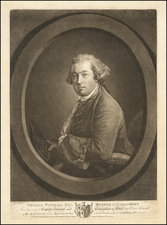The Huron Indians
Interesting image of Huron Indians bow hunting and cooking, from the first edition of Mallet's Description De L'Univers.
The Huron Indians, historically known as the Wendat, were a group of Iroquoian-speaking peoples who, by the 16th century, were settled in the region around the eastern end of Lake Huron in what is now Ontario, Canada. Their complex societies and extensive trading networks placed them at the center of significant events in North America.
During the early 16th century, the Huron established themselves as master traders in the Great Lakes region. Their strategic location between the Great Lakes and the St. Lawrence River enabled them to become pivotal middlemen, connecting tribes from the interior to European traders and settlements to the east. They traded goods such as furs, tobacco, and foodstuffs, playing an essential role in the emerging North American fur trade.
With the arrival of the French in the early 17th century, the dynamics of the region began to shift. Samuel de Champlain, a French explorer, established an alliance with the Huron in 1615. This bond was solidified not just through trade but also through shared military objectives. Both the French and the Huron found a common enemy in the Iroquois Confederacy, particularly the Five Nations located to the south.
Yet, this alliance brought its set of challenges. European contact exposed the Huron to new goods and technologies, altering traditional ways of life. More devastatingly, it introduced European diseases like smallpox, against which the Huron had no immunity. Epidemics swept through the Wendat communities, resulting in massive population declines.
Religion also played a prominent role during this period. Jesuit missionaries from France sought to convert the Huron to Christianity. These missionaries lived among the Huron, learning their language and customs to better spread their religious teachings. The establishment of missions brought about significant cultural exchanges, but it also led to tensions and conflicts. While some Huron adopted Christianity, others resisted, leading to internal divisions within their communities.
By the mid-17th century, the combined pressures of disease, internal strife, and relentless warfare with the Iroquois led to the dispersal and decline of the Huron Confederacy. Many Huron communities were destroyed, and survivors sought refuge with other tribes or with their French allies.
Alain Mannesson Mallet (1630-1706) was a French mapmaker and engineer who served in the armies of Louis XIV. After rising through the ranks, Mallet was appointed as Inspector of Fortifications, a job which also required mathematical skills and which made him a competent military engineer. Eventually, he joined the court of Louis XIV at Versailles, where he taught math and focused on writing.
Mallet is best known for his Description de L’Univers, first published in 1683, in five volumes. A wide-ranging geographical work, the Description included textual descriptions of the countries of the world, as well as maps of the celestial sky and the ancient and modern worlds. The Description continued to be published until the early eighteenth century. He also published a work in three volumes on warfare (1684) and a primer on geometry (1702).










![[The Roman God Jupiter, the Central Image from Academie de l'Espée's Second Frontispiece]](https://storage.googleapis.com/raremaps/img/small/78487.jpg)

![(Texas - Comanche Indian Photograph) Tush=a=wa or Whiteknife, Pen=a=teth=ka, Comanche Chief [Cabinet card photograph of Tosahwi, White Knife, or Tosawa; Penateka Comanche Chief]](https://storage.googleapis.com/raremaps/img/small/93032.jpg)

